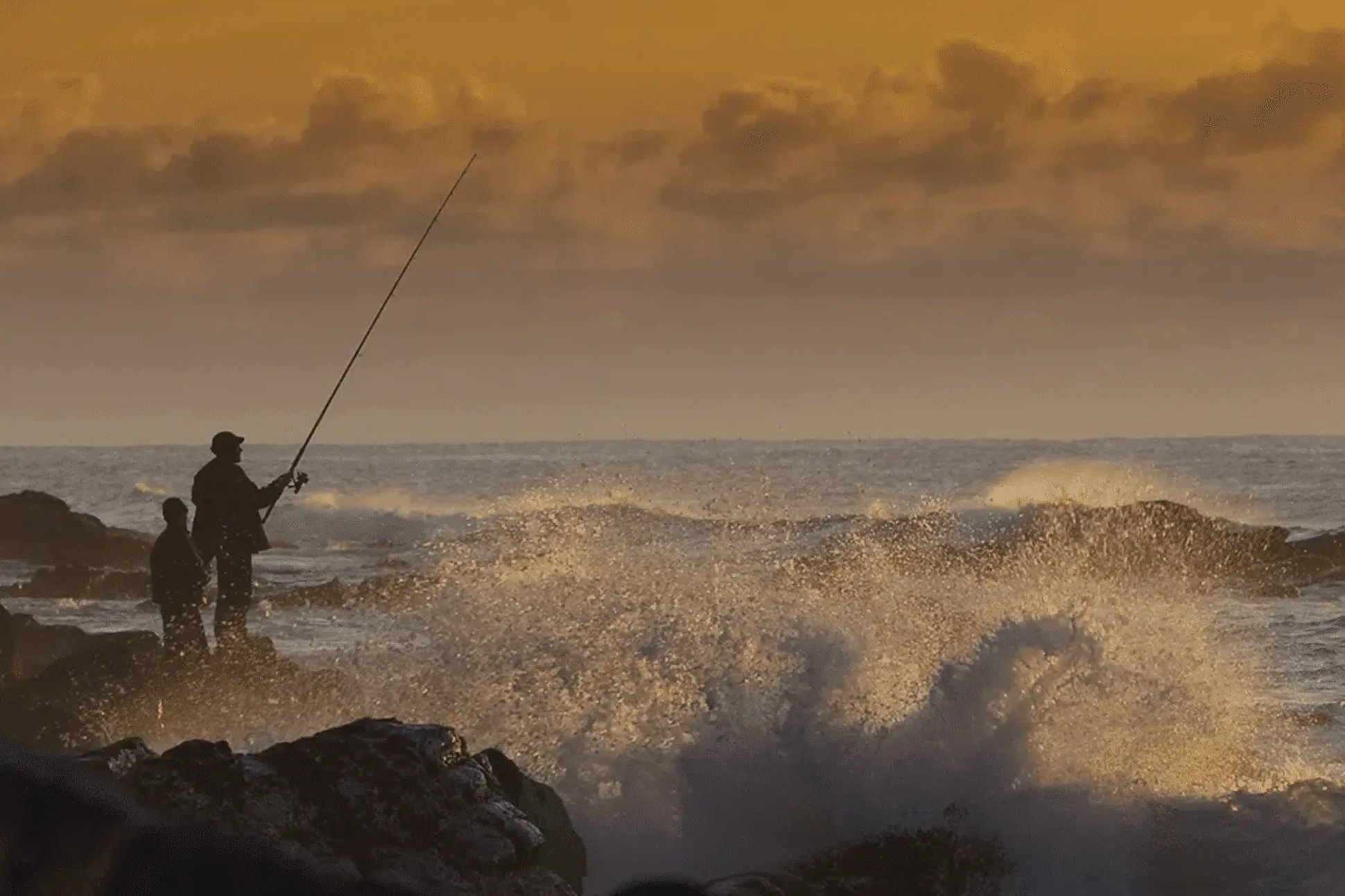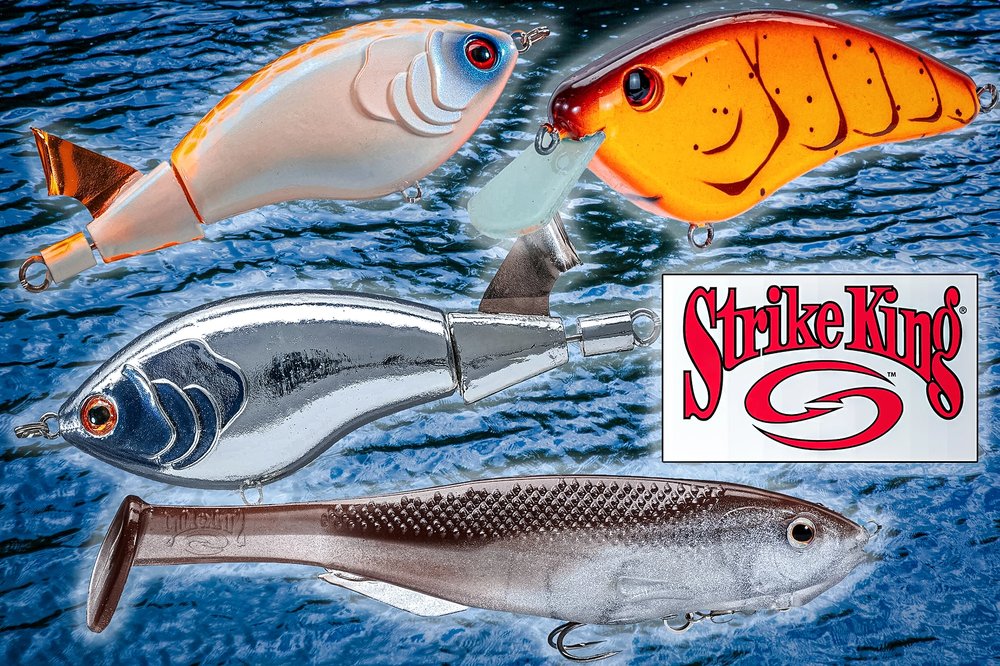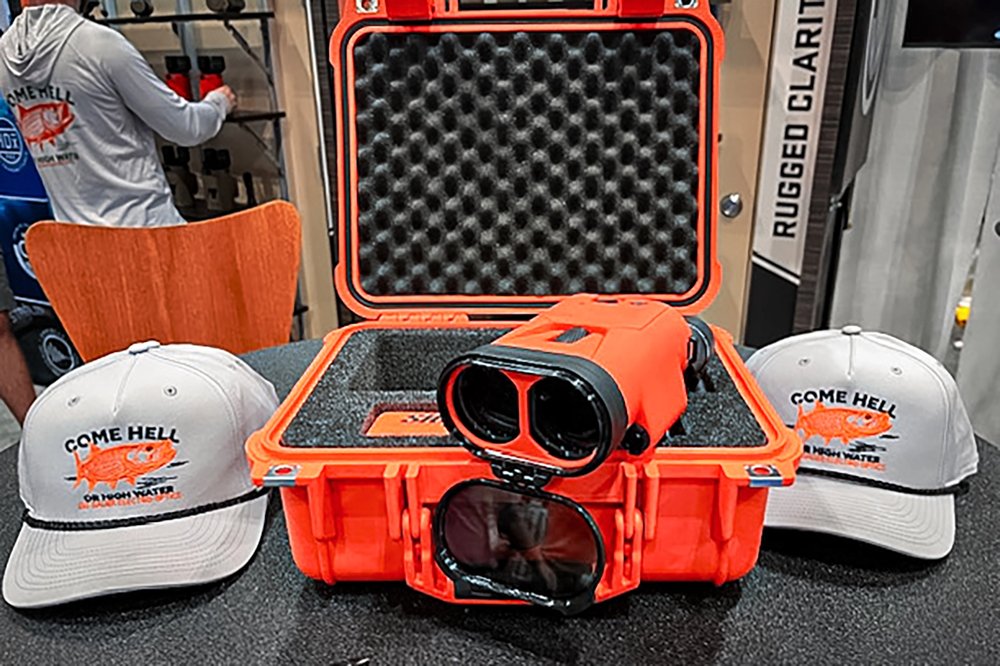There are many levels of participation in surf fishing that range from casual to seasoned professional. Almost any active person can find a level to participate in, have fun, and learn new skills. Although I chose to go all out and surf fish competitively for almost 30 years, have my body wrecked by big waves and insane weather, wielding big tackle, and sacrificing sleep for success, it isn’t necessary. A day at the beach on a warm sunny day casting bait or lures in a swimsuit is just as satisfying. Furthermore, new materials and technological advances in the late 20th century created user-friendly tackle that anyone can employ. So, pick your level and join in.
What Is Surf Fishing?

Surf fishing is fishing on land while standing on the shore or a pier or while standing in a surf zone.
A Brief History of Surf Fishing
Before World War II, the only people who fished the surf were rich men who belonged to sporting clubs. On Sunday after church, wearing fancy duds, they would head to wooden pier-like structures called “stands” and fish with lobster for bait. Lobster back then was plentiful and was regarded as trash food. So, servants would harvest lobster and chum with it while the men were in church. Isn’t it amazing how things can change through time? Remind me, what’s the price of lobster today?
Technology produced better gear in the late 20th century. This converted surf fishing from an elite sport for the few to an activity for everyone. When I started, we used linen line that needed to be washed and spread out on the grass to dry after each trip. The only reels were revolving spool models that required experience to use effectively. And an educated thumb to avoid producing a bird’s nest when casting. Today, we have graphite rods, high-tech sealed spinning reels that anyone can master, and braided line that lasts for months.

Cultural changes occurred after WWII when returning veterans found a different America. There was more leisure time, and more money to support their leisure. They also brought back spinning reels from France, and durable monofilament line was introduced. What’s more, there were many army surplus four-wheel drive jeeps available at bargain prices that made beach access easier. In the 1950s, these veterans redefined the sport. By the end of the 20th century, surf tackle had been improved so much that people began to flock to the sport. When I was a kid, there might only be a few anglers on the beach. But today, during a run of fish, there are hundreds along a stretch of sand.
There is also a great variety of choices in tackle versus decades past. Someone just beginning can buy a factory-made rod, a serviceable reel, and a bit of terminal gear for around $100 to $150. Frankly, the mass-produced rod and low-level reel won’t last long but provides the angler a chance to discover whether or not they like the sport. Careful, there only are few mid-level gear choices that are significantly better than the entry-level tackle.
If an angler really loves the sport, it’s best to move directly to a custom-built 11 or 9-foot rod and purchase an appropriately sized high-tech reel. The rod will cost $400 to $500 and the reel $700 to $900. That’s a big investment, but this is gear can last a lifetime with regular maintenance. Although initial expenditure is a lot, the alternative of purchasing new rods and reels every few years costs about the same over a decade or so.
Primal Nature
Some folks are drawn to the sport to avoid the cost of a boat, some because they love the beach, others because prep and maintenance time is low. Yet, the big attraction; the thing that hooks a person is the primal nature of it. Although technology has provided us with easier-to-use and more durable gear, the influence of technology is still small. We don’t use radar or depth recorders, mobility and access are restricted, and we can’t use underwater cameras. Instead, we rely on experience and the use of our senses to increase our success. In a sense, it’s more man against Nature than technology against Nature, and that appeals to many anglers, including me. I like that I must use my brain and analyze what I’m doing. I have to learn what makes bait and gamefish tick, and also turn the problems of weather into an advantage.
Fish Are Fish
Surf fishing is possible anywhere there is a shore. I’ve surf fished in Costa Rica, the Bahamas, Florida, the Virgin Islands, up and down the East Coast, and even in northern Canada. Although different venues can be intimidating to some people, remember that fish are fish no matter you find them. Bait fish seek structure edges and cover for protection, while gamefish have evolved to look for them in those places. Some baits that must live in the open evolved the behavior of forming huge bait balls to confuse predators. While gamefish have evolved to hunt them in packs to counteract the benefits of the bait ball. Our planet’s ecosystems have evolved to work best when there is a balance of everything. And so the give-and-take of evolution rarely gives a lasting advantage to either side.
Small differences in fish and structure from one locale to another are ameliorated when anglers learn the intricacies of their home beaches. There are variations in seasons, weather, bait migrations, tidal changes and stages, gamefish migrations, and differences in how gamefish feed. If an angler focuses on beaches near home, they spend more time fishing and less time driving, and tend to go more often. That’s important because the more trips you make to the same beach the more you learn about the nuances of structure, cover, bait fish behavior, and when gamefish are most active. That knowledge is what will improve your success. It is also helpful to read books and magazines covering surf fishing in your area. Often, these address local subtleties and can jump-start the angler’s insights.
Finding a Passion
The first time I cast a lure from the beach into Long Island Sound and caught a seven-pound bluefish I knew surf fishing would become my passion. I was eight years old. I’ve fished the surf for 70 years. And it’s as exciting to me today as it was catching that first bluefish. And it’s not just about catching fish. I’ve learned so much about fish, habitats, fishing, and myself during the journey. Also, if you take the time to notice the sights and sounds of nature: Crashing waves, behavior of sea birds, and tangerine sunsets, these will add greatly to your experience. Surf fishing is a lifetime sport for me and maybe it can be for you too.
Surf Fishing Tips From the Pros
- Avoid drowning. When fishing in big ocean waves, always wear waders, a foul weather top, and a snug belt over the top. If you fall, this will keep your waders from quickly filling with sand and water.
- Use a leader to prevent line twist and for fish handling convenience. Use 30-40 lb. mono or Perlon, a SPRO 50 lb. swivel for running line to leader, and a SPRO Prime Snap (125-lb.) on the lure end of the leader.
- Use braided line. It has its problems, but strength, durability, sensitivity, and casting distance make coping with the problems worth it.
- Know your fishing knots. There are many good knots to choose from, but an improved clinch knot is easy to tie and strong. Follow directions (10 turns for braid); there should be no overlaps in the knot’s turns.
- Seek out information on good casting technique, then practice. Good casting mechanics leads to more accurate casts, better lure presentations, and is much less tiring.




